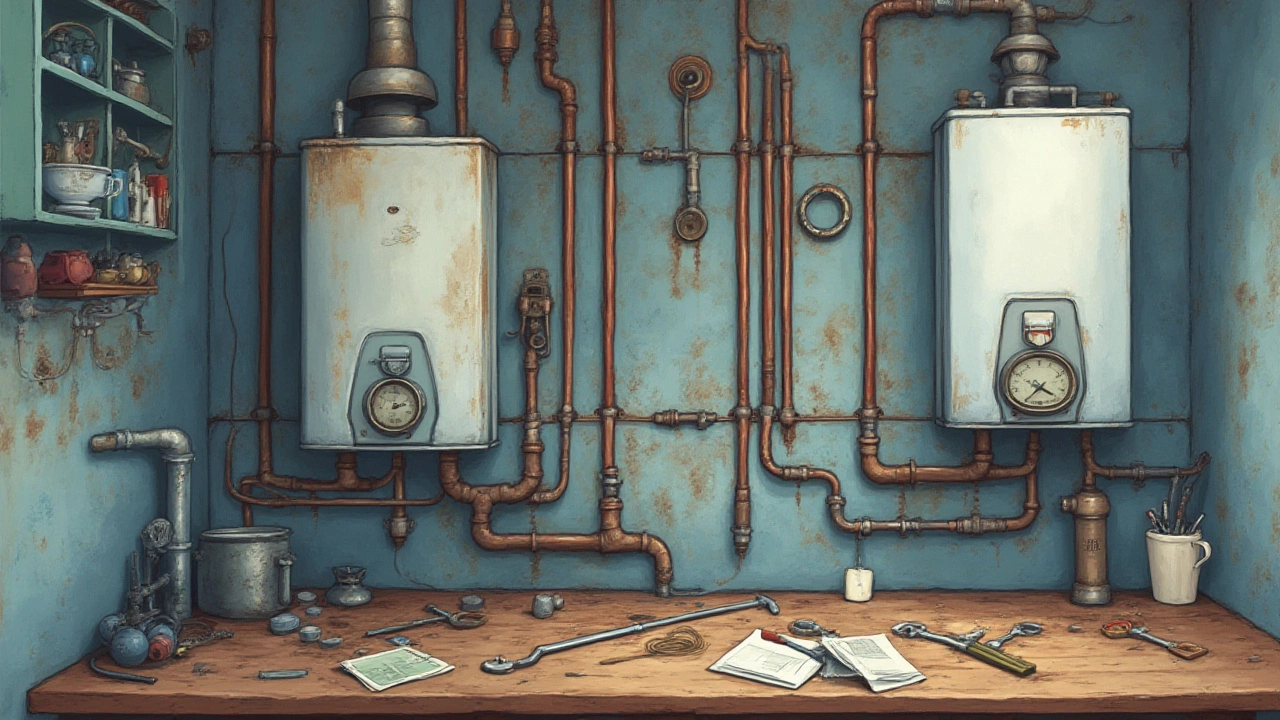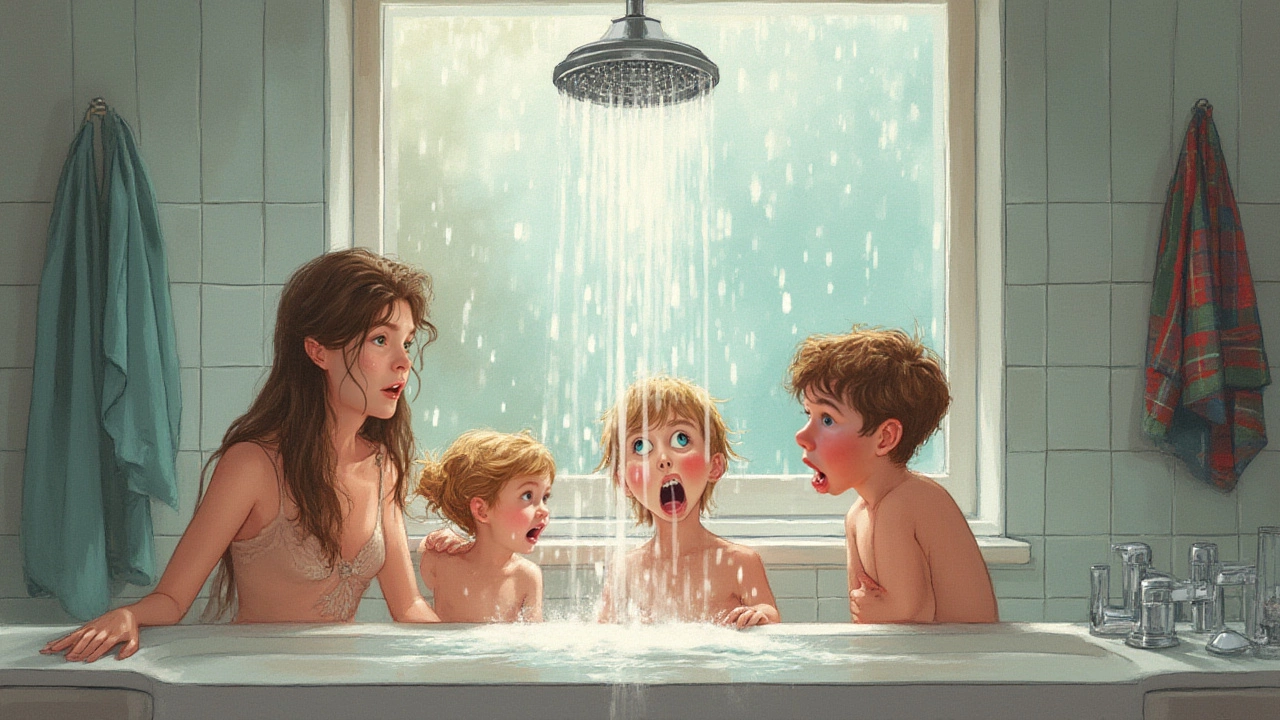Imagine stepping into a steamy shower only to be blasted with Arctic water halfway through. Suddenly, what was supposed to be a relaxing escape turns into an icy sprint. Whether you live in a century-old Victorian or a trendy new build, the disappointment of expecting hot water and getting cold never changes. It's a common problem—and the culprits are sneakier than you might think. Did you know that the average family of four can use up to 400 liters of hot water a day? Your water heater chugs along to fuel those showers, laundry cycles, and dishwashing marathons, but sometimes it just can’t keep up.
What Makes Hot Water Turn Cold?
Hot water isn’t magic—though it feels that way at 6AM. It starts in your water heater, whether that's a big old tank lurking in the basement or a compact tankless unit tucked under your stairs. When your hot water starts running cold, the first thing to suss out is: where exactly in the process is the system getting tripped up?
The most common cause, by far, is an empty tank. For families like mine (Luna loves her epic bubble baths), the hot water reserve dries up fast, especially if showers, laundry, and back-to-back dishes are all piling on at once. Traditional tank heaters only store a limited supply—once it's gone, it takes time to heat a fresh batch. Even newer tankless heaters can falter if they’re undersized or working overtime during peak demand. If you notice your hot water vanishing predictably during high-use times, you might just be outpacing your system.
Another detail that trips up many homeowners: a faulty or failing thermostat. If the thermostat can’t accurately read the temperature, it will either under- or overheat the water. Most water heaters are set between 49°C and 60°C (120°F-140°F), which is hot enough for comfort and safety but not so hot it scalds. A miscalibrated thermostat may think the water is hotter than it is—and stop heating before you ever get your warm shower.
It’s also worth inspecting the heating element if you have an electric water heater. Sediment buildup can coat the element, reducing its ability to heat or even causing it to burn out. With gas heaters, issues like a snuffed-out pilot light or a bad thermocouple (the little sensor that tells the heater when to stay lit) can be the culprit.
Pipes play a sneaky role, too. In the dead of winter, older or poorly insulated pipes lose heat fast. By the time the water travels from the tank to your tap, it’s cooled well below comfortable levels. If you notice hot water arriving coldest during frigid weather, your pipes may need a warm jacket of insulation.
Unlikely Suspects: Plumbing Cross-Connections and Supply Issues
While empty tanks and worn-out thermostats are familiar headaches, sometimes the villain isn’t your water heater at all. Plumbing gremlins can create what’s called a "cross-connection"—that’s when hot and cold lines accidentally mix. If someone does a hasty DIY fix or something inside a faucet washer breaks, cold water can sneak into the hot side, leaving you with tepid water everywhere.
Municipal water supply fluctuations catch people off guard, too. During hot spells or heavy demand, the city’s supply pressure can drop, reducing the flow to your heater and spoiling your water temperature balance. Ever wonder why your morning shower runs cold when your neighbor’s sprinklers are going full blast? There you go.
Sometimes, you’ll spot a pattern: maybe the kitchen faucet stays hot but the shower or bathroom sink can't keep up. That’s a sign of restricted flow, often from a clogged aerator, kinked pipe, or mineral buildup. Hard water—water loaded with calcium and magnesium—is notorious for gunking up not just heating elements, but pipes and fixtures, too. A government survey of British homes found that over 60% of domestic heaters suffer reduced efficiency within five years due to limescale buildup.
Check any mixing valves if you have newer plumbing. These smart valves balance hot and cold to prevent scalding, but when they fail, they sometimes open too wide to cold, resulting in a lukewarm trickle. It’s a small part, but it causes big headaches when it goes rogue.

How to Diagnose Hot Water Woes at Home
So, you’re shivering in the shower and ready to fix it yourself? Don’t reach for the toolbox just yet—start with a quick checklist. First, test multiple faucets: If only one tap runs cold while others work, the problem is local. If every faucet stays chilly, your water heater should be your prime suspect.
For a tank heater that runs cold after a while but eventually recovers, you’re likely simply using up the reserve. This is common at busy times, or if your tank size is too small for your tribe’s epic baths (I’ve had this battle during Luna’s "mermaid" bath phase). Tankless heaters, in contrast, have flow limits: running two showers and a dishwasher can trip them up, so try reducing simultaneous use.
If the water never gets hot at all, check the power or fuel. Has the circuit breaker flipped? For gas models, is the pilot light out? Both are easy fixes that don’t require a pro. Listen for strange noises from the heater: popping and banging is a sign of serious sediment buildup.
Here’s a simple table to summarize the most common causes and fixes:
| Problem | Likely Cause | Quick Fix |
|---|---|---|
| Hot water runs out too soon | Tank size too small, high usage | Stagger usage, consider larger tank |
| No hot water at all | Pilot light out, tripped breaker, broken element | Check/reset power, relight pilot, replace element |
| Hot and cold mixed | Cross-connection, broken mixing valve | Inspect faucets, replace faulty valves |
| Warm but never hot | Malfunctioning thermostat, mineral buildup | Reset thermostat, flush heater |
| Hot water only in some taps | Kinked pipe, clogged aerator | Check and clean faucets/pipes |
If you’re into DIY, try flushing the heater: turn off the power, hook up a garden hose to the drain valve, and let sediment run out. Not only does it restore heating efficiency, but it can also extend the life of your heater by years. But stick with simple stuff. Anything involving gas lines, high-voltage elements, or weird leaks? That’s when you’re better off calling a pro. Trust me—one flooded basement is enough for a lifetime.
Keeping the Hot Water Flowing: Tips and Tune-Ups
Prevention beats panic, every time. Since I started teaching Luna how to keep her epic bath times short, we run into fewer cold showers—and the heater thanks us. But practical habits help, too. Spread laundry and dishwashing through the day instead of piling it on in the morning rush. For tankless heaters, check the flow ratings—sometimes, you really do need a unit with higher capacity if you have a full house.
Insulating the first six feet of both hot and cold pipes from the heater can make a shocking difference, especially in older British or Irish homes where draughty attics can siphon away heat. Wrap the heater itself in an insulated "jacket"—these are cheap, widely available, and cut heat loss by up to 25%. Just make sure not to cover controls or the top of gas heaters (ventilation matters).
Water heaters work best when you keep them tuned up. That means checking the pressure relief valve yearly (it prevents dangerous overpressure), inspecting for rust or moisture around the base, and flushing to clear out accumulated sediment. Did you know that a water heater more than 10 years old is living on borrowed time? Stats from the Energy Saving Trust show that heaters older than a decade run up to 25% less efficiency than newer models. Replacing an old beast can drop your bills and banish cold showers for good.
For ongoing trouble, consider installing a thermostatic mixing valve for safety, and a scale inhibitor if you live in a hard water area. Softening your water reduces not just heater problems, but the weird residue on teapots and everything else, too. And always read your heater’s manual—most are available online if you’ve lost yours years ago like I did. Manufacturers often lay out troubleshooting steps in human-speak, not techno-jargon.
You don’t need to be a plumber to keep hot water flowing, just a little observant. The next time your "hot" shower runs cold, run through these checks before you panic. Sometimes, it’s a simple fix; other times, you might just need to stagger those epic bubble baths.
